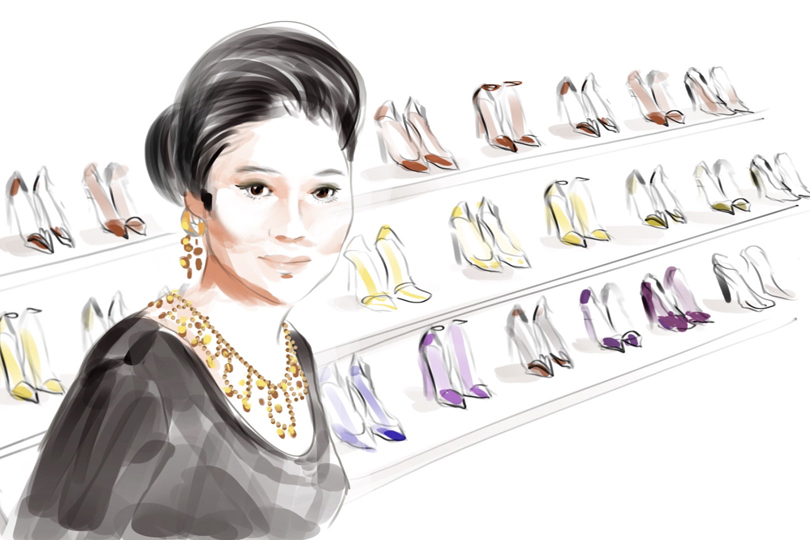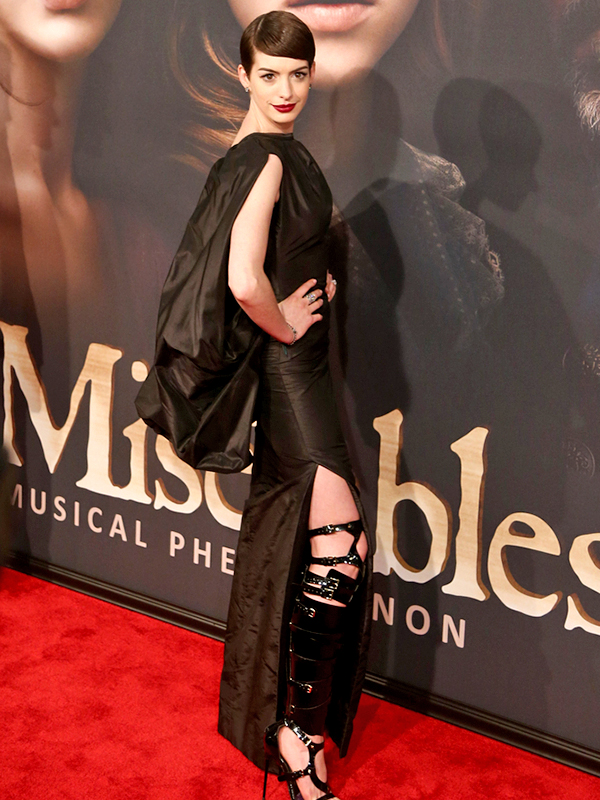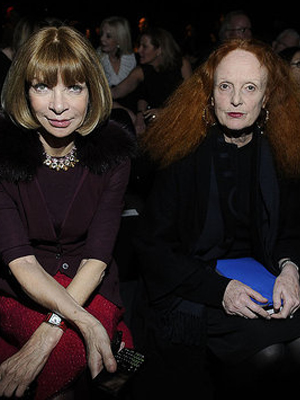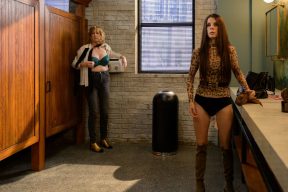Part of an ongoing series of 29Secrets stories, taking a deep dive into the history of legendary beauty products and iconic fashion and pop culture moments…
By Christopher Turner
Illustration by Michael Hak
Imelda Marcos is famous for two things: for being the First Lady of the Philippines for 21 years before being driven from power in a 1986 uprising, and for her legendary collection of shoes. Undoubtedly one of the most controversial and infamous political and social figures of the modern era, she has often been called the “Steel Butterfly” thanks to her extravagant fashion sense, lavish spending habits and political resolve.
Imelda was, of course, much more than the wife of a dictator who would eventually be known for human rights abuses and alleged money laundering. She was both beloved and hated by Filipinos. Throughout the 1970s and early ’80s, she had more power than most heads of state: she was in the cabinet running the lion’s share of the national budget as governor of Manila, and was the head of dozens of government organizations. Many people believed she would eventually succeed her husband, Ferdinand Marcos, the country’s president. However, it’s Imelda’s lavish shoe collection – a reported 3,000 pairs, which included everything from Marlet Shoes to Christian Dior – that has become the stuff of legend, and is more well-known than the many controversies surrounding the billions that she and her husband stole from the Filipino people during their time in power.
Imelda’s shoe collection has quite the legacy, and in recent years there have been discrepancies among the reports of how many pairs of shoes were actually in the collection that was seized from Malacañang Palace in 1986. How did she amass such a collection, and where are those shoes today? Here’s the story of the woman who lived a lavish lifestyle during a time of economic crisis in the Philippines, and the story behind the thousands of pairs of shoes that she left in her closet.
Humble beginnings
Imelda Marcos was born Imelda Remedios Visitación Romuáldez on July 2, 1929, in San Miguel, Manila, Philippine Islands. Her mother died of pneumonia when she was just eight years old, and her father, saddled with a failing law practice and mounting expenses, started looking for a simpler lifestyle, eventually relocating the family from Manila, the capital of the Philippines, to Tacloban in the Philippines’ eastern Visayas region. There Imelda grew up with her five younger siblings as well as several older half-siblings from her father’s first marriage.
In 1949, Imelda won a local beauty contest and was dubbed the “Rose of Tacloban.” She graduated in 1952 from Tacloban’s St. Paul’s College with a degree in education, and returned to Manila to live with relatives who had political connections in the capital. Thanks to those connections, she found work that same year in the country’s Central Bank. In 1953, she participated in the Miss Manila beauty pageant, where she was declared the co-winner and caught the eye of the city’s mayor, who declared her the “Muse of Manila,” which resulted in her picture appearing frequently in local newspapers and magazines.
While attending a budget hearing at the Philippine Congress in April 1954, she met Ferdinand Marcos, then a 36-year-old congressman who had already earned a reputation as an ambitious and media-savvy politician. The couple secretly married after a whirlwind 11-day romance, with the official reception taking place two weeks later. Over the course of the next decade, Imelda and Ferdinand established themselves as one of the premier political couples in the Philippines. During that time Imelda gave birth to three children: daughter Imee (1955), son Ferdinand, Jr. (nicknamed “Bongbong”; 1957) and daughter Irene (1960).
In 1965, Ferdinand was elected president of the Philippines and, with her beauty and poise, Imelda proved to be an invaluable asset. She had played a major role in popularizing his election campaign, with crowds attending events simply to have a look at her. She also enchanted voters during the campaign with her singing, performing a number of traditional folk songs at different stops. Campaign strategists were very aware of Imelda’s appeal, asking her to always look her very best when she appeared in public, which often meant wearing her signature ternos, a form of national dress in the Philippines. Filipino women had commonly worn the ternos for decades prior to this, but Imelda and her popularity transformed it into the dress of choice for all formal occasions in the Philippines.
Their relationship as the first couple of the Philippines was often described as a partnership, and Imelda’s glamour initially had broad appeal and drew comparisons to another famous first lady of that era, Jacqueline Kennedy.
“When Marcos was elected in 1965, they consciously styled themselves after the Kennedys. They were going to be the Philippines’ Camelot, and she was going to be Jackie,” according to Katherine Ellison, author of the biography Imelda: Steel Butterfly of the Philippines.
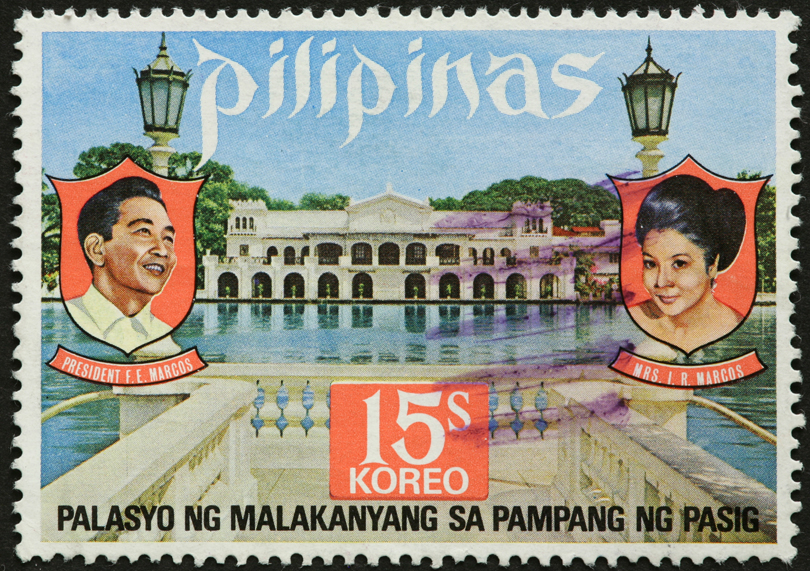
In her role as the first lady of the Philippines, Imelda met a diverse mix of world leaders, from U.S. President Lyndon B. Johnson to Cuban leader Fidel Castro and Libyan dictator Muammar al-Qaddafi. For each, she turned on the charm while portraying herself as an intimate of movie stars, heads of state and even the pope.
In 1968 Ferdinand had an affair with American actress Dovie Beams, who was in Manila to star in a propaganda film entitled Maharlika. Imelda was already a political power in her own right: shortly after Ferdinand’s election as president, he had appointed her the head of a new cultural centre in Manila. Now she used her husband’s affair as leverage to gain more political power and independence for herself. She was appointed governor of metro Manila, where she founded the Manila International Film Festival and spearheaded a number of costly beautification and development projects in the mid-1970s. Later, she served in the interim national assembly and as the minister of human settlements. As Ferdinand’s health declined, he increasingly allowed his wife to take over many of his presidential duties, sending her on official visits abroad as the de facto vice president. While some Filipino people and people around the globe loved her, others despised her for her materialism and illusions of grandeur.
Meanwhile, Ferdinand borrowed foreign money to improve the infrastructure of the country, building roads and bridges, and oversaw the construction of state-of-the-art buildings. But by his second term, the façade was starting to crumble and his corruption came into focus as the country’s debt rose to an unfathomable height. In 1972, Imelda and Ferdinand proclaimed martial law for the purpose of creating what they called a “new society.”
During the time of martial law, the couple privately scooped up private companies, silencing opposition leaders and dipping into the country’s gold resources to support their own family’s extravagant lifestyle while many Filipinos were living in poverty. No exact figures can be determined for the amount of wealth Imelda and Ferdinand acquired during their more than two decades in power, but economists have suggested that they may have illegally amassed a fortune of US$10-20 billion. Katherine Ellison, in addition to writing Imelda: Steel Butterfly of the Philippines, shared a 1986 Pulitzer Prize for her work tracing the billions of dollars the couple was accused of looting from their country. That money allegedly went to fund multiple New York purchases of real estate and works of art as well as lavish parties.
The couple’s luck would change in 1986, when a revolution in the Philippines unseated and expelled Imelda and Ferdinand, forcing the Marcos family into exile in Hawaii.
Thrown out of the country
February 25, 1986, was the climax of an army-backed “people power” revolt that became a harbinger of change for authoritarian regimes worldwide. When revolutionaries and protesters stormed Malacañang Palace, the Marcos’ private residence, the international press cameras were rolling. The world watched in amazement as they saw priceless paintings on the wall and gold-gilded statues. The New York Times reported the mansion contained “Persian carpets, a 1763 harpsichord [and] gold bathroom fixtures,” as well as “works by Picasso, van Gogh and Brueghel the Younger.” In fact, there was a huge collection of art and jewellery, including a 70-carat light-blue diamond worth $5.5 million (at least 400 times Ferdinand’s official annual salary).
But the biggest surprise was inside Imelda’s 1,500 square foot closet: 508 gowns, 888 handbags and a massive shoe collection that the Presidential Commission on Good Government (PCGG) in the Philippines claimed included 3,000 pairs of high heels, flats, sandals, boots and slippers, all size 8.5. (Some news reports have estimated that there were up to 7,500 pairs.) The collection was a mix of local and imported brands: Ferragamo, Givenchy, Chanel, Christian Dior, Pierre Cardin, Charles Jourdan and Bally, along with shoes by a variety of Filipino designers (local makers reportedly gave the then-first lady 10 pairs of shoes a week).
“They went into my closets looking for skeletons, but thank God, all they found were shoes, beautiful shoes,” Imelda was later quoted as saying.
It was said that as she fled, Imelda grabbed her most comfortable shoes: a pair of espadrilles from Nordstrom.
The revelation of her massive shoe collection turned her into a household fashion and luxury icon overnight.
So, what happened to the shoes?
As of the last reports in 2020, the Marikina Shoe Museum in the northern city of Marikina (about half an hour from Manila) had 749 pairs of Imelda’s shoes. Of those, 253 are on display in the museum, while the remaining pairs are in storage, according to local reports. Among the hundreds on display are a pair of black pumps from Italian shoemaker Beltrami, which are said to be her favourite. The Beltrami pumps are embedded with stones and gold sparkles, and Imelda loved them so much that she had several pairs in the same style.
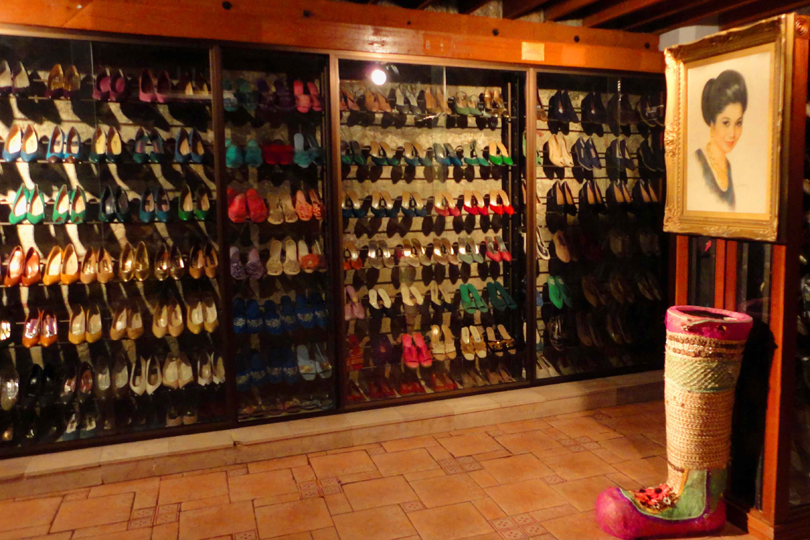
Where are the rest of Imelda’s 3,000 pairs of shoes? Their whereabouts are less definite. The PCGG and the Marikina Shoe Museum don’t publicly specify, but it has been confirmed that many of them were destroyed after years of being stored without protection at the presidential palace and later at Manila’s National Museum.
Initially, Imelda’s collection of shoes was in the possession of the Presidential Museum before they were transferred to the Philippine National Museum in Manila. In 2010, more than 150 cartons of Imelda’s clothes, precious mementoes and at least 1,000 pairs of shoes were transferred to the National Museum for safekeeping after termites, humidity and mould threatened the apparel at the riverside palace. At the museum, the fragile cartons were abandoned in a padlocked hall that had no facilities to protect them, and so they deteriorated further when tropical rains hit the Philippines in 2012. Apparently the extent of the damage was discovered only after the boxes had been drenched in rainwater that leaked through the ceiling of the hall.
“There was termite infestation and mould in past years, and these were aggravated by last month’s storm,” museum curator Orlando Abinion told the AP that year. “It’s unfortunate because Imelda may have worn some of these clothes in major official events and as such [they] have an important place in our history.”
Another possibility is that the collection is smaller than the legend of the Marcos downfall would have us believe. There is a discrepancy among reports of how many pairs of shoes were actually discovered in the presidential palace. The PCGG maintains the count was originally 3,000, but Time reported in 1987 that the “final tally” was 1,060 pairs. More recent reports from CNN, the New York Times and the BBC also report it at over 1,000.
“I did not have 3,000 pairs of shoes. I had 1,060,” Imelda herself said in 1987…although it’s probably wise not to believe everything the Marcos family says.
New life after the fall
Ferdinand died in exile in Hawaii on September 28, 1989, just three years after he and his family were forced to flee the Philippines. Before his death, legal proceedings for charges of corruption and human rights violations had already begun against the family, some of which are still ongoing today.
Despite the ongoing legal proceedings and her husband’s dishonourable exit from the presidency, Imelda wasn’t done with politics. She returned to the Philippines in the early 1990s and unsuccessfully ran (twice) for the presidency. She did manage to successfully run for office, being elected as a congresswoman in 1995, 2010, 2013, and again in 2016 for a final time. She remains politically active to this day, at age 93 as of July 2 this year, and has a good relationship with Rodrigo Duterte, the current president of the Philippines.
In 2006, she even launched her own fashion label, the “Imelda Collection,” which features clothing, jewellery and, yes, shoes, all designed by her daughter Imee.
Despite all of this, Imelda will forever be known as the dictator’s ostentatious wife with a massive collection of shoes. To this day, she continues to deny any wrongdoing, repeatedly stating that “my conscience is clear” and “I sleep well at night.” In The Kingmaker, a 2019 documentary film written and directed by Lauren Greenfield, she insists that everything she has done, including owning a massive collection of shoes, was for the Filipino people.
“When I became First Lady, it became demanding for me. I have to dress up and make myself more beautiful,” Imelda says in The Kingmaker, “because the poor always look for a star.”
Whether you love or hate her, you can’t deny that she is a star, at least in her own mind.
![]()
Want more? You can read other stories from our The Story Of series right here.

